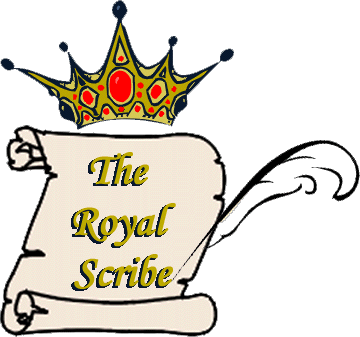 The Unofficial British Royal
Family Pages
The Unofficial British Royal
Family Pages


Monday 16 August 2004 The Greatest Pearl in the KingdomOnce called “the greatest pearl in the
kingdom” by her father – the same man who revoked her legitimacy – it must
have been a bittersweet pill for Queen Mary I of July 25th, 2004 marked the 450th
wedding anniversary of Queen Mary to Philip II of Spain – a royal marriage remembered
today more for its unrealized historical significance than for its contemporary nuances. Mary and Philip made an unusual couple, to say the
least. To begin with, at 38, she was 12 years his senior. He was also highly sought-after
in the royal marriage market, while contemporary accounts describe her as old and skinny
with missing teeth. One look at any of her portraits (which, we may keep in mind, were
meant to be flattering) confirm that the accounts weren’t simply tactless
exaggerations. And while she was a middle-aged “maiden,” the marriage was his
second. Although previously unmarried, Mary had been
engaged – several times, in fact, including once to her first cousin (and
Philip’s own father), the Holy Roman Emperor Charles V, when she was just six years
old. The engagement was broken off, however, when Charles decided instead to marry
Princess Isabella of Philip, it seems, didn’t necessarily see the
match in such desirable terms. His first wife – another cousin, Princess Mary of If Philip wasn’t looking forward to the
marriage, the English populace was even less thrilled. Uprisings were commonplace and most
of what little popularity Mary ever had quickly disintegrated during the furore. None of
this dampened Mary’s resolve to go through with the marriage. In fact, she seemed
determined in spite of it all to go forward. When Philip took exception with Mary’s
moderate treatment of Lady Jane Grey – and, symbolically, the Protestants – Mary
promptly withdrew the nine-day queen’s suspended sentence and had her executed. If more evidence was needed that Philip was
marrying Mary strictly for political reasons, we need only turn to his behavior in the
days preceding and the years following his wedding. Contemporary accounts tell us that
while he was polite to Mary at their first meeting (two days before the wedding), he was
openly flirtatious to her attendants – even making a proposition or two. After the
undignified end of Mary’s so-called pregnancy, Philip quickly departed With a typical lack of sentiment and an eye toward
politics, Philip waited a total of about five minutes before he began making overtures to
Mary’s successor, Elizabeth I. Luckily for Elizabeth, the advances, like La
Peregrina, were returned – unwanted – to Philip. In one fell swoop, Until next week, - Tori Van Orden Mart�nez |
Previous Royal Scribe columns can be found in the archive


This page and its contents are �2006 Copyright by Geraldine Voost and may not be
reproduced without the authors permission. The 'Royal Scribe' column is �2005 Copyright by Tori Van Orden Mart�nez who
has kindly given permission for it to be displayed on this website.
This page was last updated on: Sunday, 29-Aug-2004 21:03:19 CEST